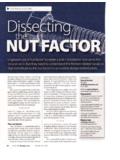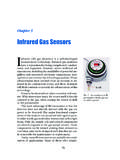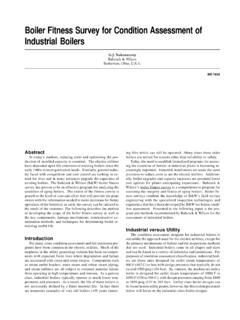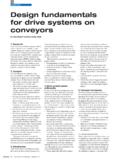Transcription of Plaster Assemblies - mnlath-plaster.com
1 Plaster Assemblies : Exterior Insulation on Framed Walls Minnesota's Adoption of the 2012. International Energy Conservation Code A publication of the . Minnesota Lath & Plaster Bureau Promoting the Industry Since 1953 . 1. Plaster Assemblies : Exterior Insulation on Framed Walls Written by Steven Pedracine CSI, CDT. Executive Director, Minnesota Lath and Plaster Bureau And David Bryan AIA, LEED. Third-Level Design Published by the Minnesota Lath and Plaster Bureau 10600 University Avenue NW. Coon Rapids, MN 55448. phone (763) 757 MLPB ((6572). web: e-mail: The Minnesota Lath and Plaster Bureau has promoted the industry since 1953. It is recognized as an educa- tion and technical spokesman for the plastering industry. It provides services to architects, the construction community and the public on a variety of matters relating to the plastering trades. Copyright Minnesota Lath & Plaster Bureau, 2015. 2. DISCLAIMER. The text, drawings and related notes contained herein are based upon the requirements of the 2012 International Building Code and the 2012 International Energy Conservation Code.)
2 This text also refers to rule changes in the Minne- sota State Building Code which reference the International Building Codes. Please see those documents for their full text and scope of information. This document contains general information on stucco and EIFS installation and related materials. It is provided as a guide only and is not intended for any specific construction project. The Minnesota Lath and Plaster Bureau makes no express or implied warranty or guarantee of the techniques, construction methods, materials and details identified herein, nor does it assume any liability for the use of this information. It is the sole responsibility of any architectural or construction industry professional to apply their professional knowl- edge in utilizing the information contained in this publication. Reproduction of this material is not permitted without the expressed written permission of the Minnesota Lath and Plaster Bureau. Acknowledgements The authors gratefully acknowledge the following individuals for their review and suggestions in completing this document: David Hamilton, AE Conrad Michael Conroy, Olympic Companies Bret Palmer, Stucco 1.
3 James Larson, Architect Mikel Poellinger, Poellinger Inc. Lee Jones, AWCI. Sean Conrad, AE Conrad Jon Anderson, Stucco 1. Rick Maurer, Laborers Local 563. Tim House, Plasterers Local 265. 3. Table of Contents Title Page ..Page 2 DIMENSIONAL STABILITY AND..3 COEFFICIENT OF LINEAR THERMAL. ACKNOWLEDGEMENTS . 3 EXPANSION IN EPS AND XPS .17. FOREWORD ..5. PREFACE ..6 ADDITIONAL CONSIDERATIONS. So where does Minnesota stand? ..6-7 WHEN INSTALLING STUCCO OVER. FOAM PLASTIC INSULATION ..18. WALL R-VALUES, THERMAL BRIDGING AND CON- Bulk Water Drainage Considerations ..18. TINUOUS INSULATION (CI) 7-9 Discussion .. 18-19. The Importance of Hygrothermal Analysis ..9 Fire Considerations ..19. Stucco Installation over Foam Plastic Insulation .. 9 HISTORY OF STUCCO OVER CI IN. Insulation Board Thickness Greater than 2 .10 MINNESOTA ..19-20. Additional Concerns .10-11. Alternate Z Furring Options ..11-12 COMPOSITIONAL STRATEGY FOR STUCCO. Disadvantages ..12 OVER FOAM PLASTIC INSULATION.
4 20. Non-Conductive Intermittent Clips ..12 Proprietary Stucco Options ..20. Advantages ..12 Crack Mitigation Strategy for Stucco Disadvantages ..12 over Foam Plastic Insulation ..21. MOISTURE VAPOR CONTROL STRATEGIES .13 EIFS ..21. Vapor Diffusion ..13 EIFS With Drainage Highlights .21-22. Air Transport ..13 Insurance for EIFS ..22. Selection and Location of Air Barriers .13-14. BUILDING MOCK-UPS ..22. PHYSICAL PROPERTIES OF FOAM PLASTIC Third Party Inspection ..22-23. INSULATIONS .14. Expanded Polystyrene (EPS) ..14-15 NEW PRODUCTS ..23. Extruded Polystyrene (XEPS aka XPS) ..15. SUMMARY DESIGN STRATEGIES FOR. OTHER TYPES OF INSULATION BOARD ..15 STUCCO SYSTEMS UTILIZING. Polyisocyanurate ..15-16 EXTERIOR INSULATION ..23-24. Mineral Wool ..16. Spray Polyurethane Foam (SPF) ..16-17 REFERENCES ..24-25. Additional Sources of Information 25-26. 4. Foreword One of the hardest challenges of the construction community is staying informed on constantly changing ma- terials, systems, techniques and code requirements.
5 One recent change is the code mandated use of exterior continuous insulation to improve the energy efficiency and environmental impact of our building stock. The intent of this paper then is to inform the construction community about strategies that utilize Plaster coat- ings over continuous insulation. We do this with some reservation because we believe the least imposing strategy already exists. In 2005 the US Department of Energy (DOE), through the Office of Energy Efficiency and Renewable Energy's Building Technologies Program began a Wall Cladding Performance Study. In this landmark 3 year field re- search project conducted by the Oak Ridge National Laboratory (ORNL) they concluded that Exterior Insula- tion Finish Systems (EIFS) with Drainage outperformed all other wall materials in terms of moisture manage- ment, while maintaining superior thermal performance. The Executive Summary of this study can be viewed and downloaded at This study it would seem is one of many reasons that point to EIFS with Drainage as the perfect continuous insulation Plaster system to meet the requirements of Minnesota's New Energy Code.
6 Other systems, while well intentioned, are often concocted Frankenstein facsimiles where the plastering contractor's experience and insight have been ignored. The unfortunate result is sometimes a contentious one, with finger pointing generally in the direction of the plastering contractor, even though he had no input or control over design decisions. Arguments that dismiss or disparage EIFS with Drainage today as a defective product for problems that hap- pened twenty years ago are unwarranted and misinformed. Notwithstanding these arguments, it is the opin- ion of the Minnesota Lath and Plaster Bureau that EIFS with Drainage is the best choice of continuous insula- tion systems. - The Minnesota Lath and Plaster Bureau, August 2015. Lex parsimoniae: The simplest answer is often the correct one . Loose translation; attributed to William Ockham, Scholastic Philosopher (c. 1287 1347). 5. PREFACE. During the last 20 years, it has become increasingly apparent that energy policy will be a central issue for this century.
7 We have a rapidly growing world population accompanied by rapidly growing per capita energy use. About 80% of this energy is based on fossil fuels and has high environmental impacts in terms of air quality, water usage, global climate change and ocean acidification from CO2 pollution. Access to these resources is a major source of international ten- sion. In the United States, buildings account for almost half of national energy use and greenhouse gas emissions, so it should come as no surprise that reduction in building energy use, like more stringent CAFE standards for automobiles, has become an important part of our national energy policy. ASHRAE standard is the basis for United States building energy codes. Every 3 years, a new version is issued. This is followed 2 years later by a corresponding version of the International Energy Construction Code (IECC). ASHRAE applies to commercial buildings; the IECC applies to both commercial and residential buildings. These energy codes must pass the Department of Energy's test for cost-effectiveness.
8 Under public law 94-163, the Department of Energy (DOE) is mandated by the Energy Policy and Conservation Act to review new versions of proposed energy documents to determine if the code or standard reduces energy consumption from previous iterations. If the DOE determines that new generations of these documents are more energy efficient than previous versions, then Minnesota (and other states) have two years to certify that their energy codes meet the more stringent requirements. There are other standards that take a more aggressive approach to reducing the environmental impact of our build- ings. The LEED rating system (Leadership in Energy and Environmental Design), which is a voluntary standard that has been adopted by many building owners, municipalities and government agencies, is one of these. Like LEED, the Inter- national Green Construction Code and ASHRAE Standard for the Design of High-Performance Green Buildings are voluntary standards that address a wide range of building environmental impacts including energy use.
9 A popular ap- proach to setting energy reduction targets is the Architecture 2030 Challenge which has been adopted by the American Institute of Architects. In 2003 an architect named Ed Mazria proposed that fossil fuel energy use in buildings should be compared to our existing building stock and reduced gradually by a combination of energy conservation measures and on-site renewable energy generation. 2030 buildings then would require no fossil fuels and thereby create no op- erational carbon emissions. In 2007 the Energy Independence and Security Act for Federal Buildings was signed into law. This mandate set in motion a similar trajectory of implementation of energy policies in the construction of federal buildings as Architecture 2030. With all of this said, it seems clear that the way we design and build is transitioning at an ever increasing pace. Meeting the next generation of energy codes cost-effectively will require an integrated approach to building construction.
10 Framed walls will require more insulation. In many cases exterior continuous insulation uninterrupted by framing will be added to minimize the effects of thermal short circuiting (thermal bridging) due to the conductivity of framing members. Air leakage will be minimized by requiring the use of air barrier systems and blower door testing. All com- ponents of walls, roofs, windows and foundations will have to be carefully designed and installed to work in unison to reduce energy consumption. The sole intent and purpose of this document is an informational guide to assist building owners, designers, contrac- tors and code authorities with the selection of Plaster systems Assemblies relating to the new energy code require- ments for framed walls. So where does Minnesota stand? As of this writing the State of Minnesota is regulated by 2012 Minnesota Commercial Energy Code which garners most of its content components of the 2012 International Energy Conservation Code (IECC) and ASHRAE (2010).
![Caviwave Sonic Console TD[2] - mplusmedtech.com](/cache/preview/7/a/c/5/5/2/9/c/thumb-7ac5529cc9ea5df817c40eccb2a6fadf.jpg)



